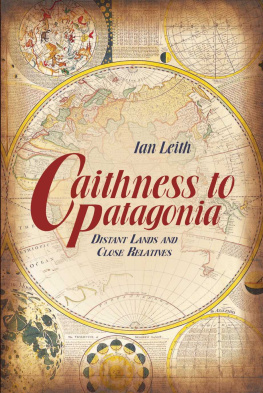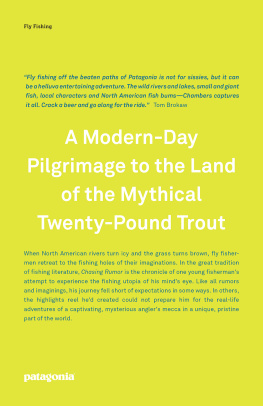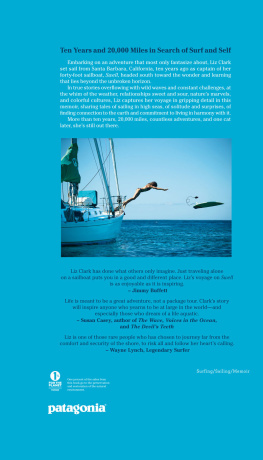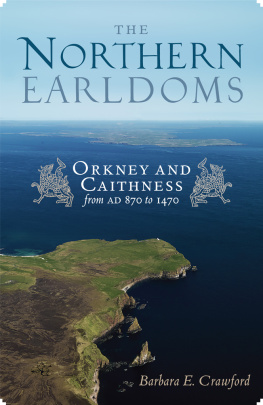
Caithness to Patagonia
Published by
Whittles Publishing Ltd.,
Dunbeath,
Caithness, KW6 6EG,
Scotland, UK
www.whittlespublishing.com
2016 J G Leith
All rights reserved.
No part of this publication may be reproduced, stored in a retrieval system, or transmitted, in any form or by any means, electronic, mechanical, recording or otherwise without prior permission of the publishers.
Kind thanks to the McPherson and Plowman families for the use of their photographs.
ISBN 978-184995-173-9
eISBN 978-184995-352-8

Dedicated to Anya Catherine Hepburn:
The new generation
Contents
Acknowledgements
The topic of Caithness and Patagonia was first brought to public attention by the work done by Margie Sinclair for the BBC Odyssey radio programme. Her work was part of the stimulus to further explore the links between Caithness and Patagonia.
When Donald MacDonald and I first discussed this project, little did we know the extent of what we would find. Donald had researched some aspects of John Hamilton, but rapidly it became evident that Hamilton was far from alone in connecting Caithness with Patagonia. The subsequent research has involved much reading, archival searching, discovering descendants and, finally, a trip to Patagonia.
The numbers of people who have made this possible are many and while the following list can not do justice to the enthusiasm and help provided, I hope that a huge collective thank you to all who I have contacted along the way will at least be some form of recognition. There are of course some people without whom this work would not have been possible:
Donald MacDonald , sheep farmer from Forss in Caithness, provided the initial impetus. He was a key identifier of descendants, and a loyal companion throughout.
Doreen Leith , along with being a key member of the Patagonian Team, provided the emotional (and editing) support that kept me, and the project, on track.
Ali Hepburn enthusiastically and diligently conducted archival research.
Catriona Metcalf , senior reporter with the John OGroat Journal, supported the project with a series of newspaper articles.
Alexandra Bowie established important Patagonian links.
Helena and Freddie Altstadt for their generous hospitality, and without whom the Patagonian trip would not have been possible.
The pupils and staff of Lybster Primary School , plus Moira Brown and the pupils and staff of Argentinas Malvinas School in Fitzroy, Patagonia.
Staff members at Caithness Archive Centre , National Library of Scotland , National Archives of Scotland and Wick Library for their willing help.
Pablo Beecher for providing notes on his interviews.
John Pilkington for sharing his interviews.
The Caithness (and UK locations) descendants and friends who have all willingly shared family information and given their support to the project:
Peter Aikman; David Begg; Olive Booth; Audry Bowie; Denise Bremner; Elizabeth Buchan; Helen and John Budge; Alex Christian; Alistair Cleary; Muriel Craig; Anne Dunnett; Rae Gregory; John Gunn; Alistair Henderson; John OGroats FC; Joanne Kaar; Andrew Leslie; Dawn McGregor; Benny and Jean MacKay; David and John MacKay; Greta and Norman MacKenzie; Kenneth McKenzie; John and James McKinnon; Tom and Linda Munro; William Munro; Peter and Rhona Nicol; Elizabeth Rintoul; Eann Sinclair and family; Annette Spencer and family; Ally Sutherland; Shirley Sutherland; Nancy Swanson; Sandra and Raymond Train; Bruce De Wert; Wick Academy FC; William Wilson.
The Patagonia descendants and friends:
Brian Altstadt; Denise Altstadt; Alicia Bain; Bobby Bain; Caroline Bain; Gladys Bain; Monica Bain; Vanessa Bain; Margarita Barnetson; Club Deseado Juniors; Vivian Earsman; Winnie Fraser; Stephen Gallie; Ariel Hamilton; Daphne and Alejandro Jamieson; Mayo Hewlett; Isobel MacDonald; Angela McPherson; Diana McPherson; John and Palmenia Nicol; Michael OByrne; Claudia Perea; Eduardo Tribaya; Gem Urquhart; Mary Walker; Ray Willans.
To Journey Hopefully
Bleak, windswept territory, suitable for Scotsmen and sheep.
Patagonia is a long way from Caithness, both physically and mentally. Apart from the wide horizons common to both, there is literally a world of distance between the two. In the late 19th century, however, a number of Caithness people took on the challenge of Patagonia.
Caithness is flat but by no means barren. From the mid-1800s onwards the county became increasingly geographically, politically and economically linked to the rest of Britain. Undoubtedly times were hard for many families living there, especially if they were large in number. Sons and daughters were often through necessity required to make their own ways in the world. Their cramped homes and challenging financial conditions may have been key motivating factors in the decision to seek new horizons. In Patagonia they would initially find endless horizons but also harsh weather and little if anything in the way of home comforts. Whatever their lifestyles at home in Caithness amounted to, what greeted them in Patagonia must have been well beyond their knowledge or imaginings.
No home; no tools or materials to build one; no roads, no neighbours; sometimes no sheep; no fences, dependent for their food on what they could shoot or catch.
Were the drivers purely financial, or was there a desire to grasp an opportunity? The Scots in general are recognised as a notoriously migratory people, so the Caithness Patagonian Pioneers may simply have followed this inbuilt natural sense of adventure.
Attributed to Sir David Kelly, British Ambassador.
Life and Work : the magazine of the Church of Scotland, 1925.
The Census and Some of its Uses: outlining a plain philosophy of population, etc./ G. T. Bisset-Smith. Edinburgh, 1921.
In 1880 a young man from Wick in Caithness arrived in the Falkland Islands. Over the following 60 years, John Hamilton was to become a significant force in the development of sheep farming in Patagonia. Today his legacy lives on among the Patagonian sheep farms through his great-grandchildren, who continue to farm the lands he judicially bought and established. In Caithness, his legacy is recognised through his philanthropy; the formation of the Hamilton Trust enabled support and financial assistance to be given to farms and businesses throughout Caithness.
John Hamilton, however, was not the only Caithness man or woman to have played a part in the development of Patagonia as a major sheep-farming region.
The descendants of the Caithness Patagonian Pioneers are very aware of their Caithness Patagonian links. The families keep their memories alive with stories and mementoes. This work is intended to honour these pioneering men and women from Caithness, and to provide a picture of the lives and conditions they faced and mastered in the early days of sheep farming in Patagonia.
John Hamilton left Caithness to work in the Falkland Islands, where a significant British community already existed. The islands were largely owned by the Falkland Islands Company, as an English colony, although many of the immigrant population were indeed Scots. After five years in the Falkland Islands, John Hamilton was among a number of men persuaded to set up in Patagonia. So began the story of the Caithness connection with a windy, lonely and faraway region as far south on the globe as Caithness is north. John Hamilton became one of the regions most successful sheep farmers and businessmen, and was instrumental in attracting other Caithness Pioneers to Patagonia.
Next page








